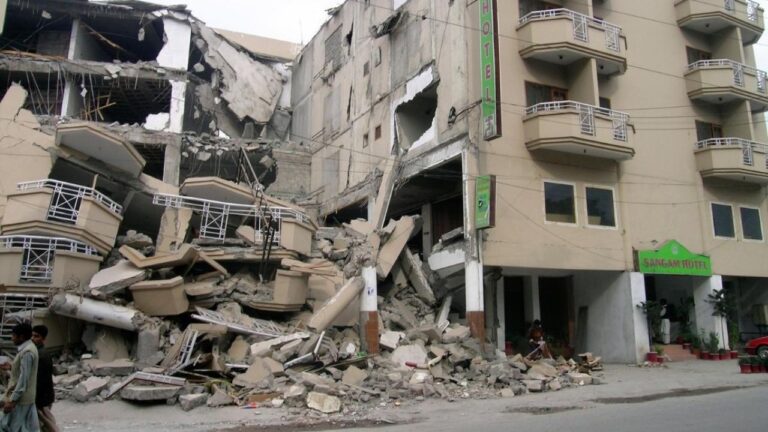
The Quad, which includes India, the US, Japan, and Australia, started out as a group of friends after a tragedy. After the terrible Indian Ocean tsunami in 2004, these four democracies worked together as the “Tsunami Core Group” to organise humanitarian aid and disaster relief. This working together set the stage for a bigger strategic conversation.
In 2007, Japanese Prime Minister Shinzo Abe used the Quad to promote stability in the region and support a rules-based international order. Abe brought the Quad back to life in 2017 after a break, and it gained new strength as tensions rose in the Indo-Pacific.
A Flexible Yet Impactful Partnership
Unlike NATO or other formal alliances, the Quad is deliberately informal. It avoids rigid institutional constraints, allowing greater agility and political acceptability, particularly for countries like India that prioritize strategic autonomy. Yet, even in this flexible format, the Quad has spearheaded meaningful progress in maritime domain awareness, technological cooperation, and humanitarian readiness, thereby reinforcing regional resilience.
Maritime Security: Core Pillar
Maritime security has emerged as the Quad’s defining and most effective domain. Since 2017, the group has launched coordinated initiatives like the Indo-Pacific Maritime Domain Awareness network, advanced joint naval drills such as the expanded Malabar exercises, and platforms for intelligence sharing, all aimed at protecting freedom of navigation and deterring coercive actions in contested waters. These efforts send a clear signal that the Quad is committed to preserving stability in the commons seas, skies, and cyberspace that underpin regional prosperity.
Multidimensional Cooperation: Beyond Security
While maritime security remains central, the Quad’s agenda spans broader domains. In recent years, the partners have deepened collaboration in critical and emerging technologies including cybersecurity, semiconductors, and open-RAN, as well as in health security, climate resilience, and infrastructure development.
Recognizing evolving challenges such as pandemics and supply-chain disruptions, the Quad has also advanced cooperative frameworks like the Quad Health Security Partnership and initiatives aimed at clean energy and resilient infrastructure.
India’s Strategic Role in the Quad
For India, the Quad is invaluable on multiple fronts. It solidifies New Delhi’s strategic engagement across the Indo-Pacific and complements India’s Act East orientation. It also provides platforms for capacity building, technological exchanges, and maritime cooperation that align with India’s ambitions as a net security provider in the Indian Ocean. At the same time, India maintains its strategic autonomy by engaging with other partners, including Russia and ASEAN, without being drawn into formal military alignments.
Responding to the Rising Chinese Challenge
A central impetus behind the Quad is the strategic recalibration necessitated by China’s increasing assertiveness in regional waters and military modernization. China perceives the Quad as a counterweight, often framing it as an “Asian NATO,” but the four members emphasize that their collaboration is rooted in promoting a free, open, and inclusive Indo-Pacific, not containment.
Recent developments reflect the Quad’s relevance. Australia and Japan have deepened defense cooperation, including costly warship contracts and advanced technology sharing, reflecting the urgency of regional threats.
The United States has reaffirmed support for expanding U.S.–India military ties and strengthening the Quad’s security role. Meanwhile, Quad foreign ministers continue to demonstrate unity in forums, reinforcing their collective commitment to Indo-Pacific stability.
Enduring Relevance Amid Diplomatic Crosswinds
Despite renewed tensions between Washington and New Delhi over tariffs, perceptions of diplomacy, and differing policies toward third countries, the Quad remains resilient. Though some summits have been delayed, the group’s underlying strategic logic persists: shared democratic values, mutual concerns over coercion, and the need for actionable, multilateral cooperation.
Looking Ahead: Reinforcing the Quad’s Role
Moving into the latter half of the decade, the Quad offers a pragmatic, principled pathway for addressing the Indo-Pacific’s complex challenges. By doubling down on maritime initiatives, enhancing supply chain resilience, expanding technology partnerships, and deepening engagement with regional actors like ASEAN, the Quad can continue to offer global public goods including stability, freedom of the commons, and development while preserving strategic flexibility.
Conclusion
The Quad is a strong, flexible, and informal framework based on shared values and practical cooperation that stands out in a time of rising geostrategic competition and regional uncertainty. It gives India a solid place in the Indo-Pacific, strengthens regional norms, and gives India real, adaptable ways to deal with new security and development problems. The Quad is still important, even more so now that alliances are changing and tensions are rising. It is necessary for peace, stability, and prosperity in the Indo-Pacific.






